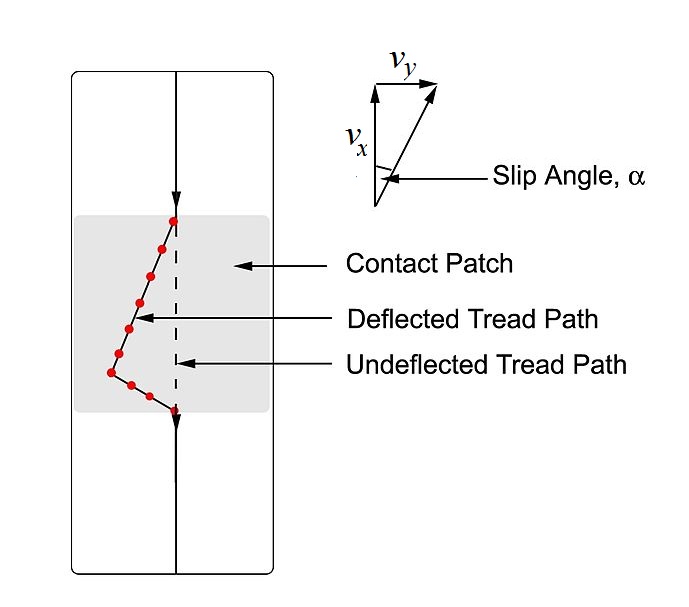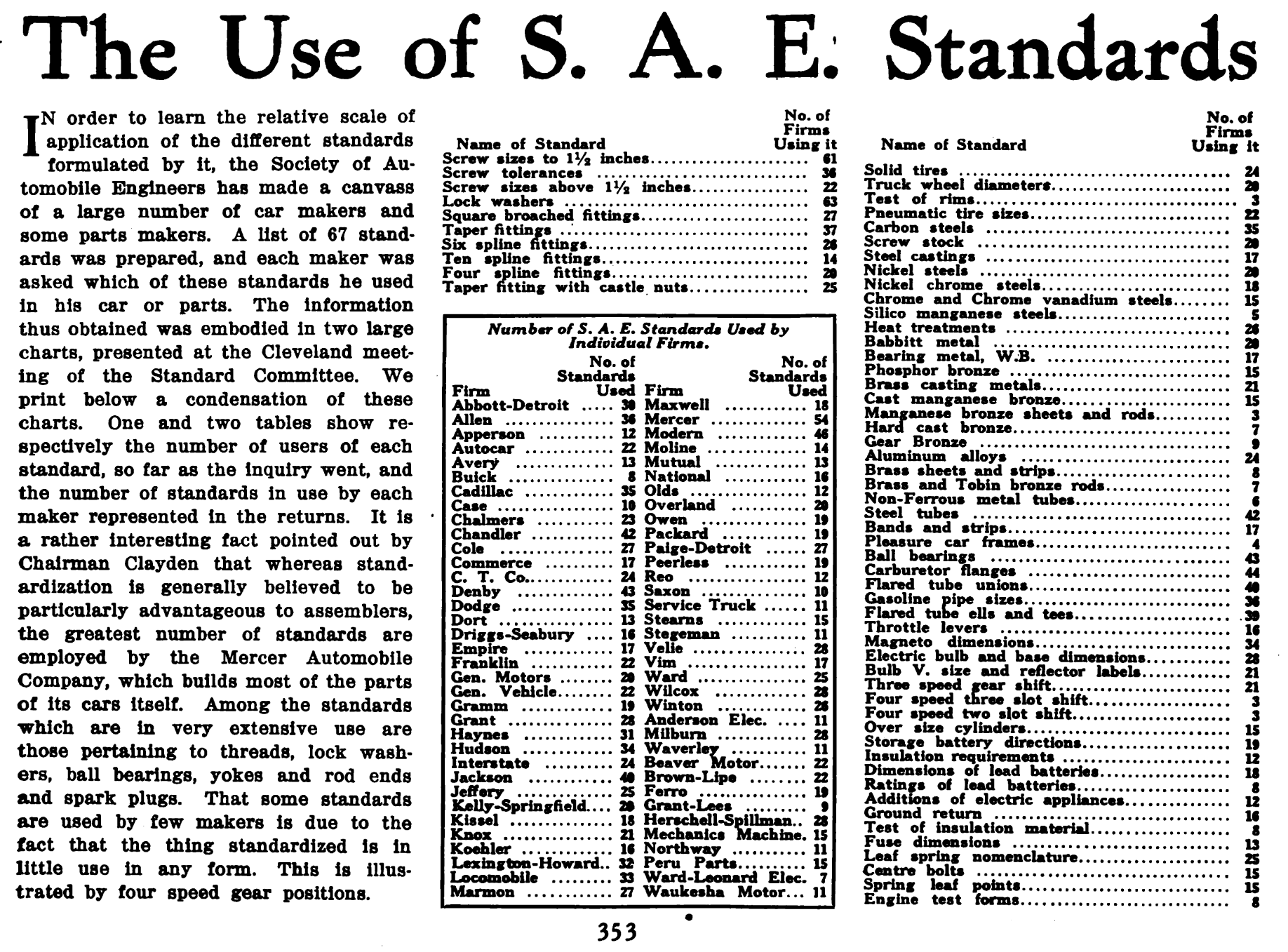|
Pacejka
Hans Bastiaan Pacejka (12 September 1934 – 17 September 2017) was an expert in vehicle system dynamics and particularly in tire dynamics, fields in which his works are now standard references. He was Professor emeritus at Delft University of Technology in Delft, Netherlands. Magic Formula tire models Pacejka developed a series of tire design models over the last 20 years. They were named the "Magic Formula" because there is no particular physical basis for the structure of the equations chosen, but they fit a wide variety of tire constructions and operating conditions. Each tire is characterized by 10–20 coefficient In mathematics, a coefficient is a multiplicative factor in some term of a polynomial, a series, or an expression; it is usually a number, but may be any expression (including variables such as , and ). When the coefficients are themselves ...s for each important force that it can produce at the contact patch, typically lateral and longitudinal forc ... [...More Info...] [...Related Items...] OR: [Wikipedia] [Google] [Baidu] |
Tire Model
In vehicle dynamics, a tire model is a type of multibody simulation used to simulate the behavior of tires. In current vehicle simulator models, the tire model is the weakest and most difficult part to simulate.Yukio Nakajima (2019) Advanced Tire Mechanics', ch.11 pp.707-710 Tire models can be classified on their accuracy and complexity, in a spectrum that goes from more simple empirical models to more complex physical models that are theoretically grounded.Monsma, Saskia (2015Feel the Tire - Tire Influence on Driver’s Handling Assessmen phd thesis at Aalto University , pp.19-20 Empirical models include Hans B. Pacejka's ''Magic Formula'', while physically based models include brush models (although they are still quite simplified), and more complex and detailed physical models include RMOD-K, FTire and Hankook. Theoretically-based models can be in turn classified from more approximative to more complex ones, going for example from the solid model, to the rigid ring model, to the ... [...More Info...] [...Related Items...] OR: [Wikipedia] [Google] [Baidu] |
Slip Angle
In vehicle dynamics, slip angle or sideslip angle is the angle between the direction in which a wheel is pointing and the direction in which it is actually traveling (i.e., the angle between the forward velocity vector v_x and the vector sum of wheel forward velocity v_x and lateral velocity v_y, as defined in the image to the right). This slip angle results in a force, the cornering force, which is in the plane of the contact patch and perpendicular to the intersection of the contact patch and the midplane of the wheel. This cornering force increases approximately linearly for the first few degrees of slip angle, then increases non-linearly to a maximum before beginning to decrease. The slip angle, \alpha is defined as \alpha \triangleq -\arctan\left(\frac\right) Causes A non-zero slip angle arises because of deformation in the tire carcass and tread. As the tire rotates, the friction between the contact patch and the road results in individual tread 'elements' (finit ... [...More Info...] [...Related Items...] OR: [Wikipedia] [Google] [Baidu] |
Vehicle System Dynamics
For motorized vehicles, such as automobiles, aircraft, and watercraft, vehicle dynamics is the study of vehicle motion, e.g., how a vehicle's forward movement changes in response to driver inputs, propulsion system outputs, ambient conditions, air/surface/water conditions, etc. Vehicle dynamics is a part of engineering primarily based on classical mechanics. Factors affecting vehicle dynamics The aspects of a vehicle's design which affect the dynamics can be grouped into drivetrain and braking, suspension and steering, distribution of mass, aerodynamics and tires. Drivetrain and braking * Automobile layout (i.e. location of engine and driven wheels) * Powertrain * Braking system Suspension and steering Some attributes relate to the geometry of the suspension, steering and chassis. These include: * Ackermann steering geometry * Axle track * Camber angle * Caster angle * Ride height * Roll center * Scrub radius * Steering ratio * Toe * Wheel alignment * Wheelbase Distributi ... [...More Info...] [...Related Items...] OR: [Wikipedia] [Google] [Baidu] |
Tire Industry People
A tire (American English) or tyre (British English) is a ring-shaped component that surrounds a wheel's rim to transfer a vehicle's load from the axle through the wheel to the ground and to provide traction on the surface over which the wheel travels. Most tires, such as those for automobiles and bicycles, are pneumatically inflated structures, which also provide a flexible cushion that absorbs shock as the tire rolls over rough features on the surface. Tires provide a footprint, called a contact patch, that is designed to match the weight of the vehicle with the bearing strength of the surface that it rolls over by providing a bearing pressure that will not deform the surface excessively. The materials of modern pneumatic tires are synthetic rubber, natural rubber, fabric, and wire, along with carbon black and other chemical compounds. They consist of a tread and a body. The tread provides traction while the body provides containment for a quantity of compressed ai ... [...More Info...] [...Related Items...] OR: [Wikipedia] [Google] [Baidu] |
Self Aligning Torque
Self aligning torque, also known as aligning torque, aligning moment, SAT, or Mz, is the torque that a tire creates as it rolls along, which tends to steer it, i.e. rotate it around its vertical axis. In the presence of a non-zero slip angle, this torque tends to steer the tire toward the direction in which it is traveling, hence its name. The magnitude of this torque can be calculated as the product of the lateral force generated at the contact patch and the distance behind the wheel centre at which that force acts. This distance is known as the pneumatic trail. The steering torque around a non-vertical steer axis with non-zero mechanical trail Bicycle and motorcycle geometry is the collection of key measurements (lengths and angles) that define a particular bike configuration. Primary among these are wheelbase, steering axis angle, fork offset, and trail. These parameters have a major ... is given by : (trail + pneumatic trail) · cos( cas ... [...More Info...] [...Related Items...] OR: [Wikipedia] [Google] [Baidu] |
Bicycle And Motorcycle Dynamics
Bicycle and motorcycle dynamics is the science of the Motion (physics), motion of bicycles and motorcycles and their components, due to the forces acting on them. Multibody dynamics, Dynamics falls under a branch of physics known as classical mechanics. Bike motions of interest include Mechanical equilibrium, balancing, countersteering, steering, brake, braking, Acceleration, accelerating, Suspension (vehicle), suspension activation, and vibration. The study of these motions began in the late 19th century and continues today. Bicycles and motorcycles are both single-track vehicles and so their motions have many fundamental attributes in common and are fundamentally different from and more difficult to study than other wheeled vehicles such as Dicycle (vehicle), dicycles, tricycles, and quadracycles. As with unicycles, bikes lack lateral stability when stationary, and under most circumstances can only remain upright when moving forward. Experimentation and mathematical model, mat ... [...More Info...] [...Related Items...] OR: [Wikipedia] [Google] [Baidu] |
SAE International
SAE International, formerly named the Society of Automotive Engineers, is a United States-based, globally active professional association and standards developing organization for engineering professionals in various industries. SAE International's world headquarters is in Warrendale, Pennsylvania, 20 miles north of Pittsburgh, Pennsylvania. Principal emphasis is placed on global transport industries such as aerospace, automotive, and commercial vehicles. The organization adopted the name SAE International to reflect the broader emphasis on mobility. SAE International has over 138,000 global members. Membership is granted to individuals, rather than companies. Aside from its standardization efforts, SAE International also devotes resources to projects and programs in STEM education, professional certification, and collegiate design competitions. For historical legacy reasons, the label "SAE" is commonly used on tools and hardware in North America to indicate United States c ... [...More Info...] [...Related Items...] OR: [Wikipedia] [Google] [Baidu] |
Stiff Equation
In mathematics, a stiff equation is a differential equation for which certain numerical methods for solving the equation are numerically unstable, unless the step size is taken to be extremely small. It has proven difficult to formulate a precise definition of stiffness, but the main idea is that the equation includes some terms that can lead to rapid variation in the solution. When integrating a differential equation numerically, one would expect the requisite step size to be relatively small in a region where the solution curve displays much variation and to be relatively large where the solution curve straightens out to approach a line with slope nearly zero. For some problems this is not the case. In order for a numerical method to give a reliable solution to the differential system sometimes the step size is required to be at an unacceptably small level in a region where the solution curve is very smooth. The phenomenon is known as ''stiffness''. In some cases there may be ... [...More Info...] [...Related Items...] OR: [Wikipedia] [Google] [Baidu] |
Racer (simulator)
Racer, fully named ''Racer Free Car Simulation,'' is a freeware and source available video game simulator that runs on Microsoft Windows, Linux, and Mac OS X. Although ''Racer'' started out as a driving simulator, it also has features that are usually seen in racing games, such as racing against AI cars, or against human opponents in multiplayer mode. Its weak points, when compared with commercial racing games, is the absence of wear/damage physics or a career mode. History ''Racer'' was first released on 29 August 2000. Over the years, a community has grown around ''Racer.'' The software itself is maintained exclusively by creator Ruud van Gaal. An important characteristic of Racer is its openness; The formats for cars, tracks and other data are documented. Furthermore, tools to aid in car and track creation are part of the release. As a result, a large number of cars has been created and published, in a large variety: Formula One, GT, vintage, trucks, daily drivers, luxur ... [...More Info...] [...Related Items...] OR: [Wikipedia] [Google] [Baidu] |
Delft University Of Technology Faculty
Delft () is a city and municipality in the province of South Holland, Netherlands. It is located between Rotterdam, to the southeast, and The Hague, to the northwest. Together with them, it is part of both the Rotterdam–The Hague metropolitan area and the Randstad. Delft is a popular tourist destination in the Netherlands, famous for its historical connections with the reigning House of Orange-Nassau, for its blue pottery, for being home to the painter Jan Vermeer, and for hosting Delft University of Technology (TU Delft). Historically, Delft played a highly influential role in the Dutch Golden Age. In terms of science and technology, thanks to the pioneering contributions of Antonie van Leeuwenhoek and Martinus Beijerinck, Delft can be considered to be the birthplace of microbiology. History Early history The city of Delft came into being beside a canal, the 'Delf', which comes from the word ''delven'', meaning to delve or dig, and this led to the name Delft. At the el ... [...More Info...] [...Related Items...] OR: [Wikipedia] [Google] [Baidu] |






